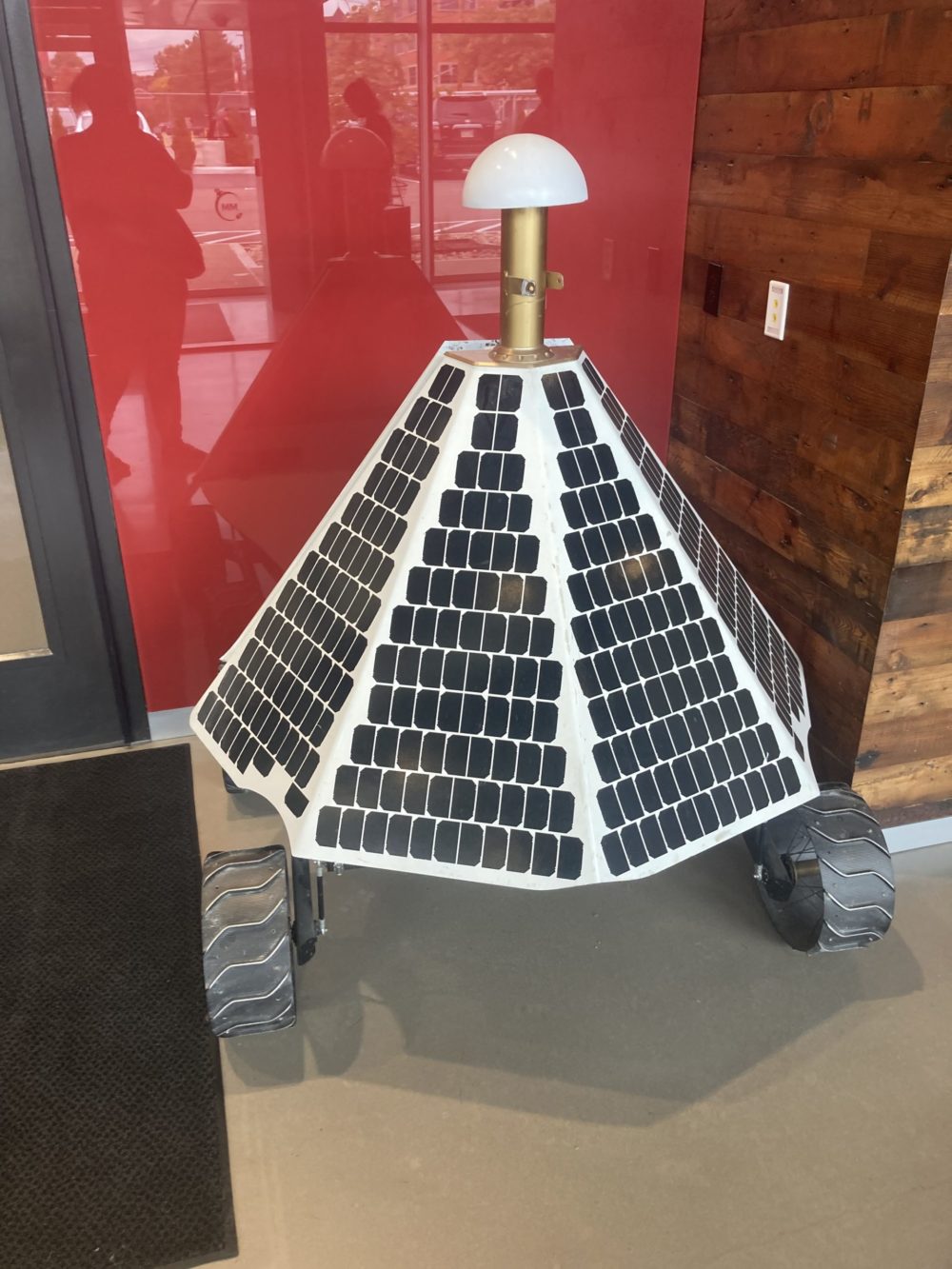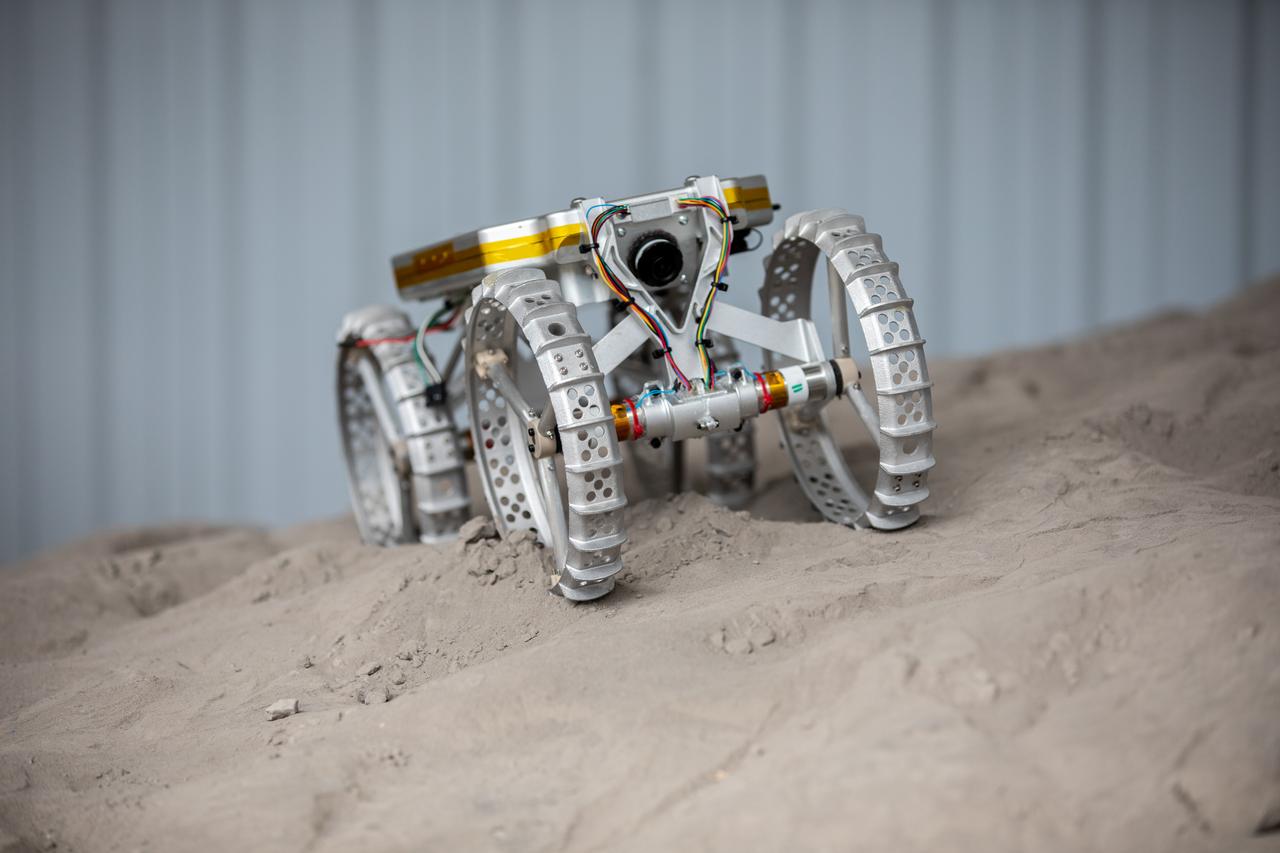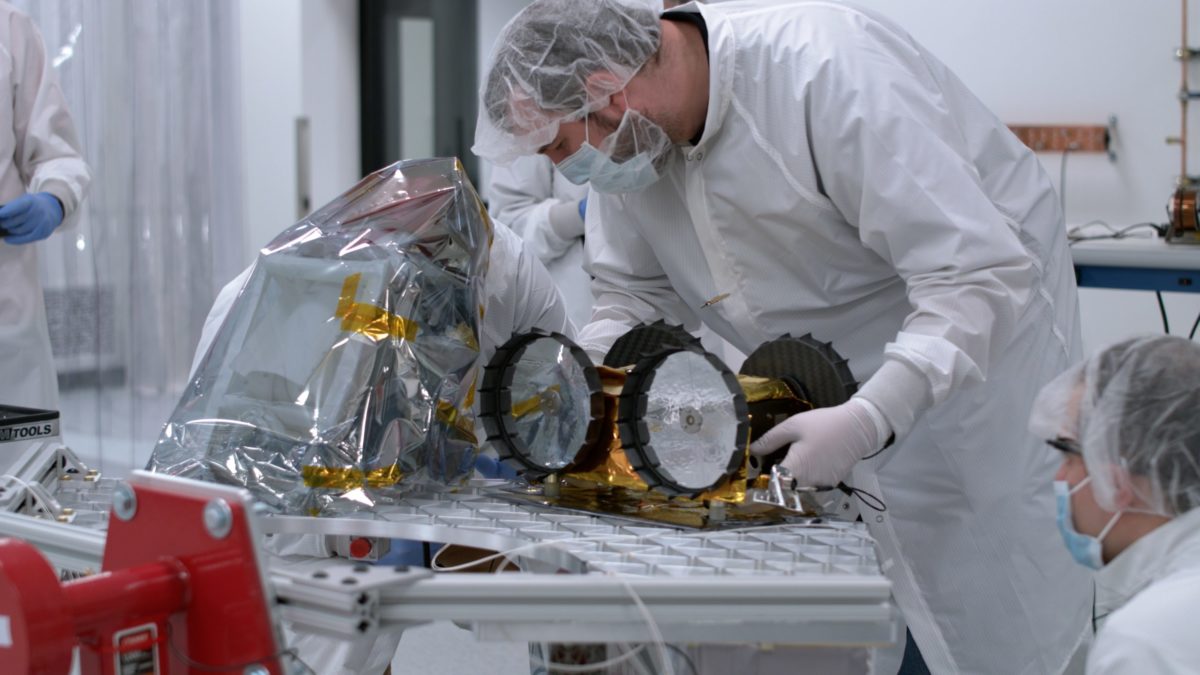Yet there’s a city that tends to be forgotten in the discussion of what made it possible for a man to walk on the moon: Pittsburgh.
Despite that the launch took place a thousand miles away from the Steel City — and as far as we can tell none of the astronauts have black-and-gold heritage — local leaders in the space tech industry told Technical.ly without the City of Bridges, that chapter on the 1960s you probably recall from history class would have been much shorter.
“There are some incredible stories to tell about both the historical contributions of Pittsburghers to space and the story that’s being written right now about what’s coming next for Pittsburgh, and its important role in space exploration,” said Sam Moore, executive director of the Moonshot Museum.
Space history
Aside from sports teams, one thing Pennsylvania is famous for is its industrial center, and Pittsburgh is one of the hubs in the Keystone State where things get made. In 2019 the Heinz History Center devoted an exhibit to exploring Pittsburgh’s role in the space race. During that time, Emily Ruby, a curator for the Heinz History Center, learned that manufacturing companies, at the time, such as Alcoa, Westinghouse and PPG were integral to the moon landing.
“A lot of what we see as the contributions that happened in the ‘50s and ‘60s during the Apollo era are directly related to the industries of Pittsburgh, the steel industry, and aluminum and things like that,” Ruby said.
Alcoa produced and supplied the program with the over a million pounds of aluminum alloy it needed for the Saturn V rocket series. If you’re unfamiliar, the Saturn V is the launch vehicle developed by NASA under the Apollo program. In a similar vein, PPG, a paint manufacturing company, would later provide 340 gallons of specialized paint to restore the Saturn V during the Apollo 11 50th anniversary project in 2019. And Westinghouse secured the contract to create the camera that filmed the moon landing.
Despite this claim to fame, in the present day, many employees from aforementioned companies are unaware of their workplaces’ participation in the Space Race, Ruby said. And besides the occasional museum exhibit dedicated to this part of history, that ignorance extends to the average Pittsburgher.
“I would say the average Pittsburgher probably doesn’t know unless they worked [on a space project] in some capacity,” the curator said. “You know, when I give talks on this subject … I’ll have old timers in the audience that worked at Union Switch and Signal and they’re like, ‘Oh yeah, we made hundreds of the relays and the signals on the lunar module.’”

A model inside the Moonshot Museum. (Photo by Atiya Irvin-Mitchell)
Geographic ties
One org that tries to keep this history alive in addition to supporting the current space industry in Pennsylvania, Ohio and West Virginia is the Keystone Space Collaborative. Justine Kasznica, the founding board member and board chair at Keystone Space Collaborative, said because Pittsburgh is only two hours away from the NASA Glenn Visitor Center in Cleveland, the NASA Katherine Johnson IV&V Facility an hour and a half away in West Virginia, and the Wright Patterson Air Force base at Dayton, the city is geographically desirable in the world of space tech.
“What this does is it positions our region to be leaders, as we look at our place in what is going to be a $1 trillion space business market globally by 2030, or 2040,” Kasznica said. And we think it’s going to be closer to 2030.”
In addition to geography, Kasznica pointed to robotics and aerospace programs such as the National Science Foundation-funded National Research Center for Advanced Computing in Space at the University of Pittsburgh and Carnegie Mellon University’s constant robotics work as areas that are likely to keep the city directly involved in space innovation. Still, engineering and academic research can’t happen without funding. Fortunately through the years, the US government, Kasznica said, has deemed companies and universities in the city as deserving of millions in investments through grants and contracts.
“That growth rate [of the industry] has been relatively stable, largely because of the government funding that underpins this industry through economic upturns and downturns, which is great news for this region,” Kasznica said.
She also pointed to the recent AFWERX Hub that was opened on the North Side by the U.S. Air Force to serve as a Keystone Space Innovation Center, which the Keystone Space Collaborative will run, as another vote of confidence from the government. The goal is for the AFWERX hub to be a space where military personnel and space tech companies can co-work and collaborate on different projects.
“Our partnership with them is going to help propel this region to the forefront of defense and space-related innovation,” Kasznica said. “In the next few years, we have support from all three states for their federal and local state delegations and we’re looking to really build a robust community and ecosystem to put us on the national stage.”

Astrobotic’s CubeRover undergoes mobility testing at the NASA Kennedy Space Center. (Photo by NASA/Glenn Benson)
One small step for man, one giant leap for the Pittsburgh startup community
One space tech company already well known in this area is Astrobotic. The North Side-based company has earned acclaim inside and outside of the city for its Peregrine lunar lander, which is slated to launch to the moon in 2023. Thanks to the company’s support of the Moonshot Museum, also located on the North Side, Pittsburgh residents who visited the museum had the opportunity to see Astrobotic engineers put the finishing touches on the lunar lander. In November it was sent off for the final round of acceptance testing, which it completed just this week.
In 2020, the company also made headlines for securing a nearly $200 million contract with NASA. The federal space hub chose Astrobotic to carry a water-hunting rover — NASA’s Volatiles Investigating Polar Exploration Rover, aka VIPER — to the moon in 2023 by using its Griffin lunar lander.
“It is an enormous honor and responsibility to be chosen by NASA to deliver this mission of national importance,” Astrobotic CEO John Thornton said in a statement at the time of the award announcement. “Astrobotic’s lunar logistics services were created to open a new era on the Moon. Delivering VIPER to look for water, and setting the stage for the first human crew since Apollo, embodies our mission as a company.”
Additionally, the company kicked off the summer of 2022 by completing a successful test of its lunar lander with NASA. It wasn’t the first successful test the two entities had completed, but it stood out for being the most “realistic” at the time as prototypes that reflected the mobility systems of the rover and lander were used while stripping them both for their heavier components. When the Peregrine spacecraft does launch, if all tests go according to schedule, it will be the first time in 50 years that the US has been to the moon. And Pittsburgh will be the reason.
Astrobotic isn’t alone in Pittsburgh in its space exploration work, as the Iris, a rover developed by a team of CMU students, is expected to be attached to the Peregrine. Weighing only 4 pounds, Iris will go down in history as the first American and student-developed rover to land on the moon in addition to being the smallest and lightest rover.
“We are a university team, which is kind of a big deal in the sense of it kind of leads the way for other student teams to be able to say, ‘Hey, this is possible to do,’” Raewyn Duvall, the program manager for Iris and an electrical and computer engineering Ph.D. student, told Technical.ly in December 2021. Iris “shows that universities can do rovers as well, for the moon and other planets.”
And beyond
From the work of the 1960s to modern tech and university efforts to give Pittsburgh a presence on the moon, the city has done a lot to contribute to space innovation in the U.S. Between the AFWERX Hub and work CMU, Astrobotic and more are doing to get local tech to the moon, Pittsburgh continues to hold a place in space tech history, in the present.
And although some contributions have been forgotten in recent years, museums such as the Heinz History Center, the Carnegie Science Center and the Moonshot Museum are teaching about Pittsburgh’s past and what space tech could offer students in the future. They aim to inspire the next generation of Pittsburghers: You, too, can gain galactic glory.
“The United States could not have landed on the moon without Pittsburgh,” Moonshot’s Moore said. “Without companies like Westinghouse and PPG and Alcoa and the tradition of innovation and the impact of [the] industry here in western Pennsylvania, the moon landing 50 years ago couldn’t have happened.”
Atiya Irvin-Mitchell is a 2022-2024 corps member for Report for America, an initiative of The Groundtruth Project that pairs young journalists with local newsrooms. This position is supported by the Heinz Endowments.
This editorial article is a part of Technology of the Future Month 2022 in Technical.ly's editorial calendar. This month’s theme is underwritten by Verizon 5G. This story was independently reported and not reviewed by Verizon 5G before publication.
Before you go...
Please consider supporting Technical.ly to keep our independent journalism strong. Unlike most business-focused media outlets, we don’t have a paywall. Instead, we count on your personal and organizational support.
Join our growing Slack community
Join 5,000 tech professionals and entrepreneurs in our community Slack today!

Tech Hubs’ new $210M funding leaves Baltimore and Philly off the table

Nonprofits are training AI chatbot ‘employees’ to take over tasks that cause burnout and stress

Supreme Court upholds TikTok ban, as creators and communities brace for impact


